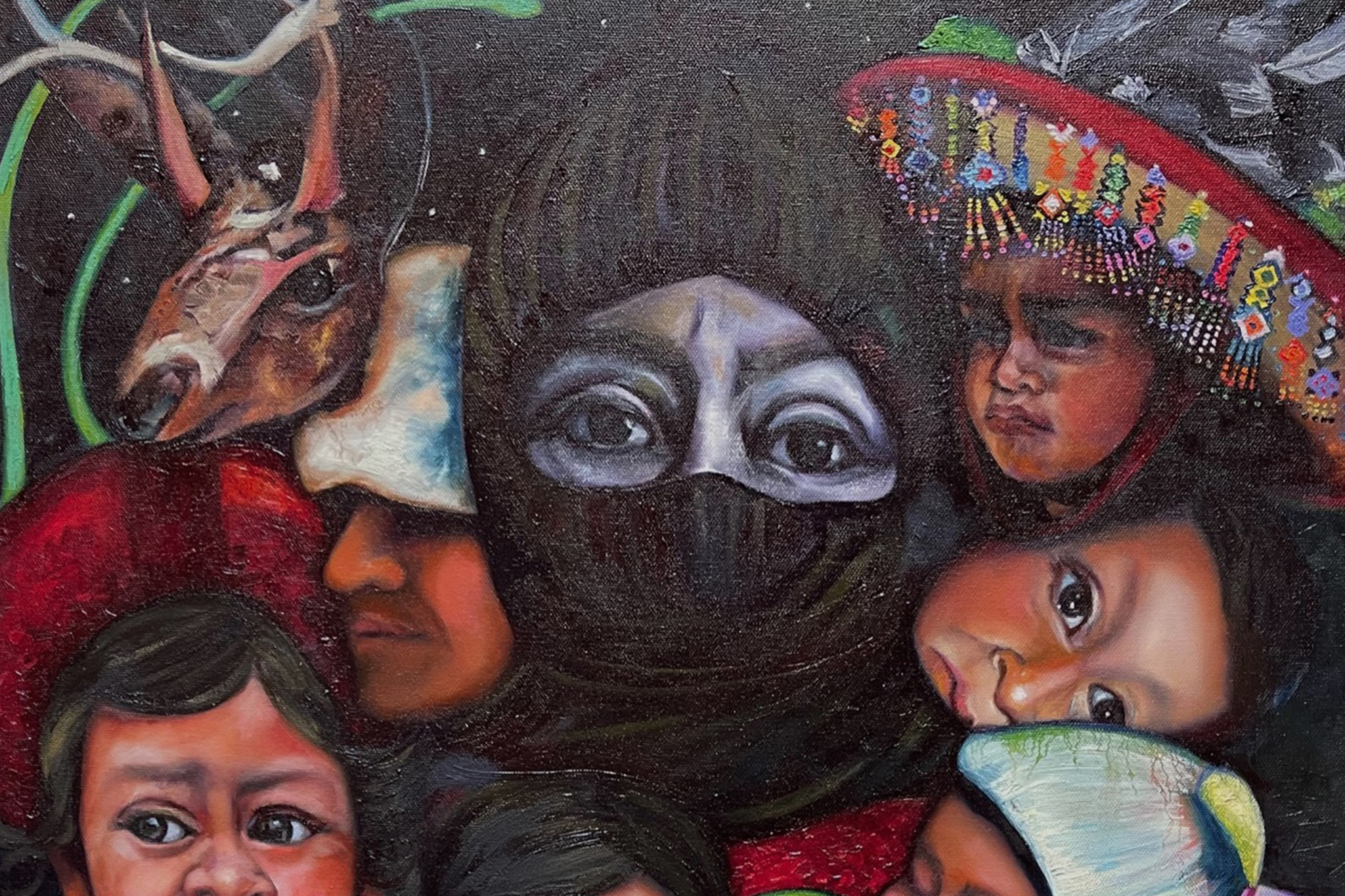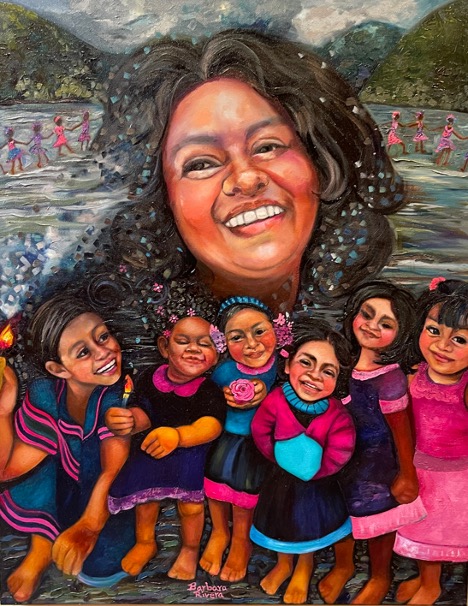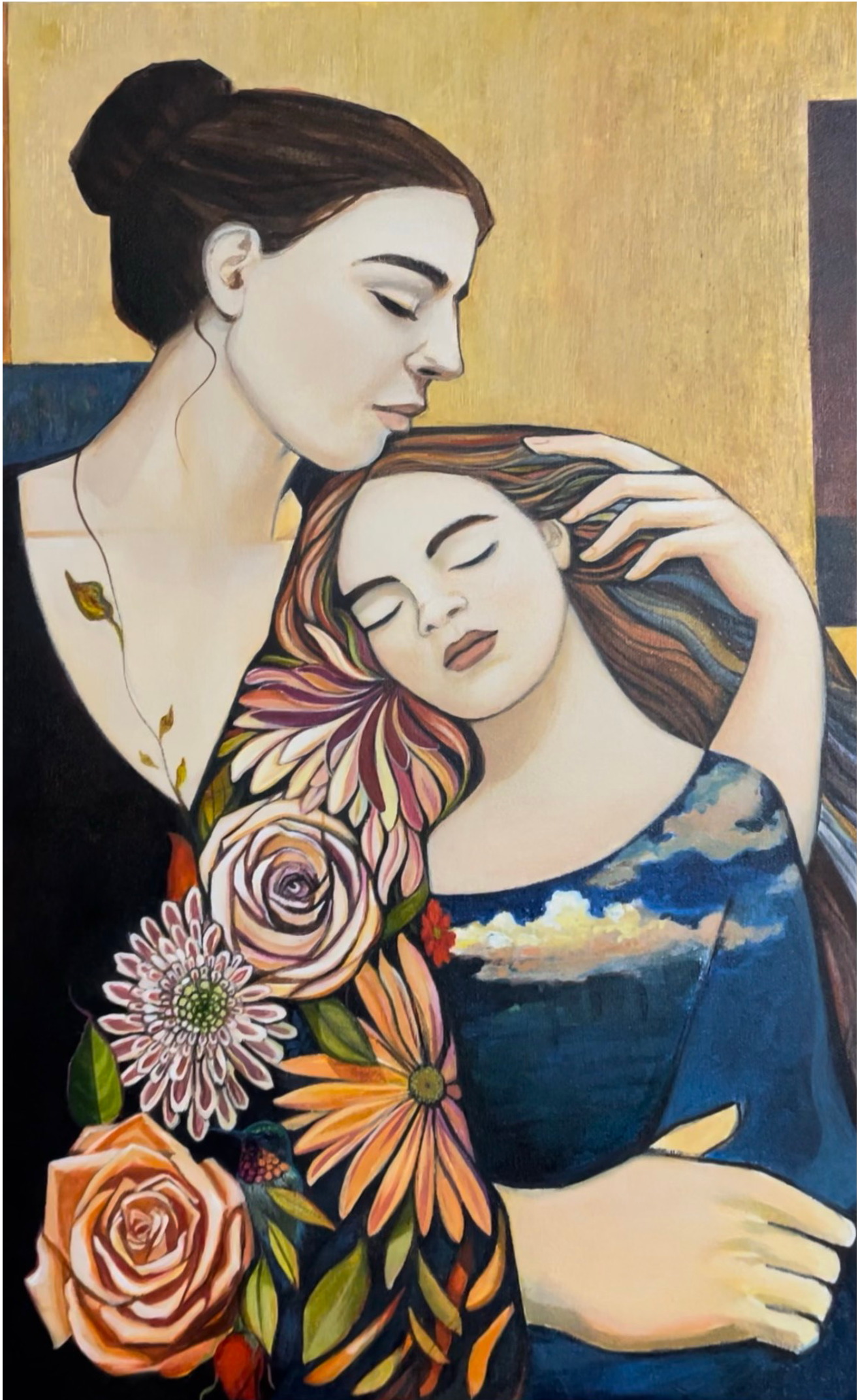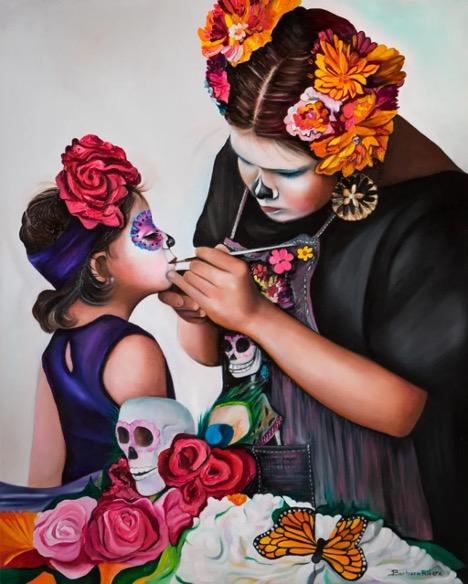Traditionally, history is told by the winners — by the colonizers, not the colonized. Fortunately, these days there is much greater interest in the faces behind the colonization stories, about the people who drove the past into the present and the future. And our interpretation of our origin stories has become more honest.
The art of México from the last centuries has fewer blind spots than many notions of art history. After all, revolutions do, of course, produce revolutionary art. In the USA, blind spots about our history with México (both her Revolution and her art) run deep.
America Invertida aims to right some of these wrongs.
“The artwork in this exhibition draws its inspiration from poets, writers, environment activists and Zapatistas leaders. It’s a unifying SUR to SUR and brown to brown dialogue.
The title is inspired by Joaquín Torres García’s America Invertida 1943 ink on paper. Torres Garcia challenges the imposition of top to bottom geographical relations between the north and the south.”
Gallery Curator Jimmy Centeno chose wisely. The theme for the artists Barbara Rivera, Laura Vazquez Rodriguez, and Aydee Lopez Martinez is loosely based around the lives of Berta Cáceres, winner of the 2015 Goldman Environmental prize; Rigoberta Menchú, winner of The 1992 Nobel Peace Prize; and Comandanta Ramona, a leader of the Zapatista National Liberation Army (EZLN, Ejército Zapatista de Liberación Nacional).
The art, and these artists, gently, beautifully and forcefully reinforce new ideas of women, solidarity among women, and the roles and contributions of women who fight for themselves and the future of their worlds. The work of each of the three women artists complements the others. They all have strong drawing chops, all represent their own lives in their work, and all are skillful colorists.
The past and the present come together in the work of Torres-Garcia and these three contemporary women artists. Between the four of them, our notions of who owns history are turned up-side down.
“These seeds will never die.” These are the words of artist Barbara Rivera, speaking about the artwork and relationships developed out of the exhibition, America Invertida, by Gallery Curator Jimmy Centeno, showing at the CASA 0101 Theater in LA. They are standing in front of Martinez’ work “A Blessing and a Curse”.
Our correspondent Victoria Hamlin talked with the three artists Laura Vazquez Rodriguez, Barbara Rivera, and Aydee Lopez Martinez; here are some of their thoughts.
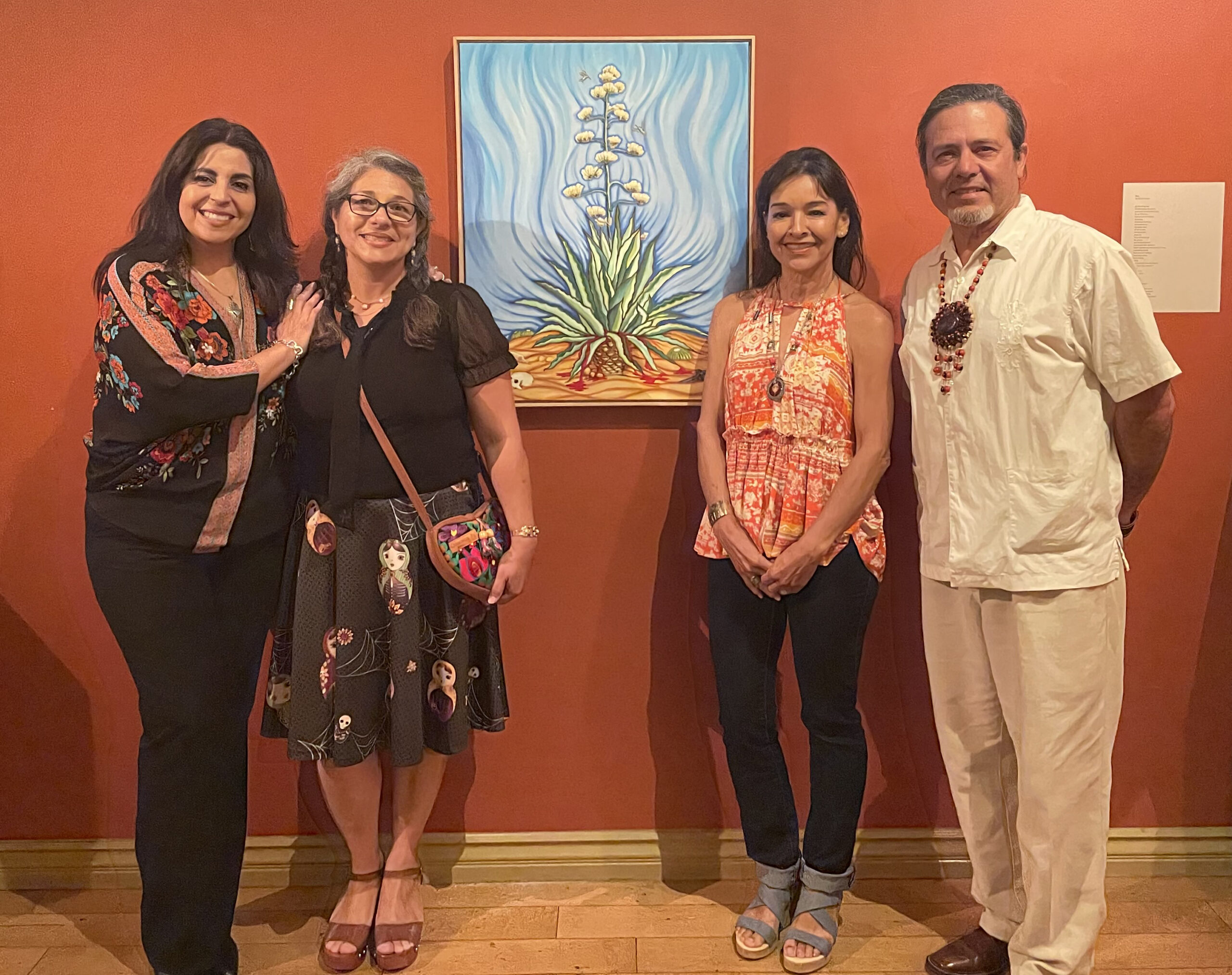
What is the importance of this show to you?
Laura Vazquez Rodriguez: This exhibit is a tribute to Berta Cáceres, winner of the 2015 Goldman Environmental prize; Rigoberta Menchú, winner of The 1992 Nobel Peace Prize; and Comandanta Ramona, a leader of the Zapatista National Liberation Army (EZLN, Ejército Zapatista de Liberación Nacional), who refused to be silenced, who fought to defend their land, their rights, and their indigenous way of life. Some paid the ultimate price in their fight for freedom. I celebrate their social, economic, and political achievements. They are champions for peace.
Barbara Rivera: There was a lot of creative freedom in this project. This whole project was bigger than all of us, there is so much more that we can continue to do to be a part of this beautiful world. There are different kinds of suffering and our world is a hot mess right now, we have to do our little part, put in our 2 cents to make it better.
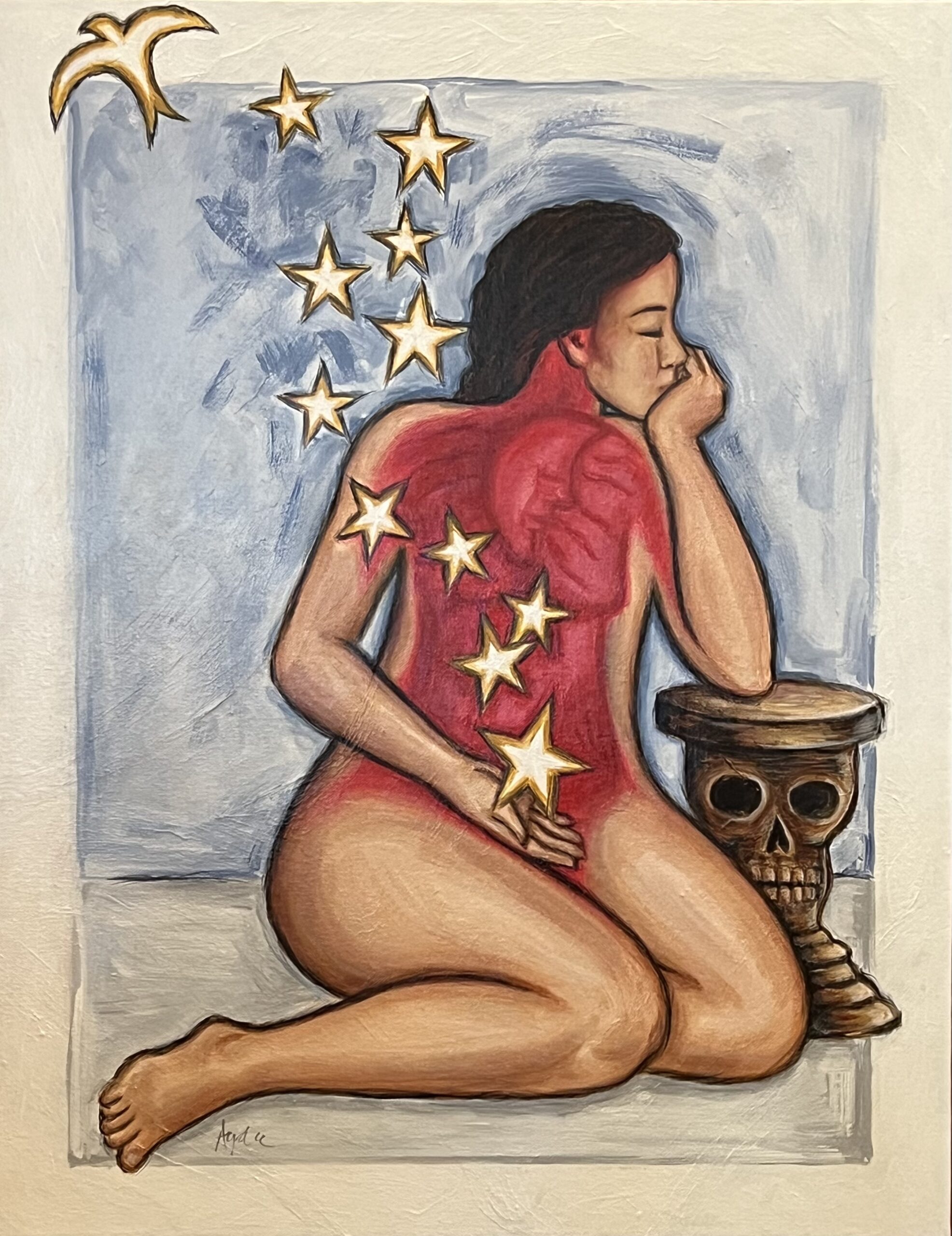
Aydee Lopez Martinez: I think that our goal as artists was to take a little bit of the essence of these women and weave it into each one of the pieces we created. It motivates me to learn so much more about them and so many women out there like them.
With these works, I want to bring awareness to the incredible power that women have when we unite in the name of change. This exhibit is not only about Latin American women, it is about humanity and our shared struggle for justice. Courage to act begins with one voice. We have the power to make a difference.
Can you tell me some about your own history?
BR: As the child of immigrants, I totally identify with my Mexican/Cuban roots, even more Méxican because we still go back every year with my mom. Even though we’re born in different places, we are all similar.
ALM: My family and I immigrated from a small town in México to the Cypress Park neighborhood of Northeast Los Angeles, California in 1970. I attended several community colleges before transferring over to Cal State University Los Angeles where I received a BFA. I have an art studio in Covina where I work as an artist and art teacher.
LVR: I grew up in the predominantly Mexican community of Pico Rivera. I was raised to believe that all people are equal. We are all valuable and we are responsible for one another.

What is your inspiration?
BR: As an adult I started realizing that oh, my goodness, the beauty in my culture is incredible. La cultura is beautiful, let’s do something to really show your culture. I love all that.
The environmentalist Berta Cáceres and the stuff that she was fighting for. She was assassinated, but what people don’t realize is that the seeds that were planted will never die, they are blossoming in children and other people that took up the cause. I want to learn everything about this woman and her work and her love for humanity.
You realize that it’s not about you, you put your ego down and record our culture, everything will start falling in place. It’s not about you, it’s bigger than all of us.
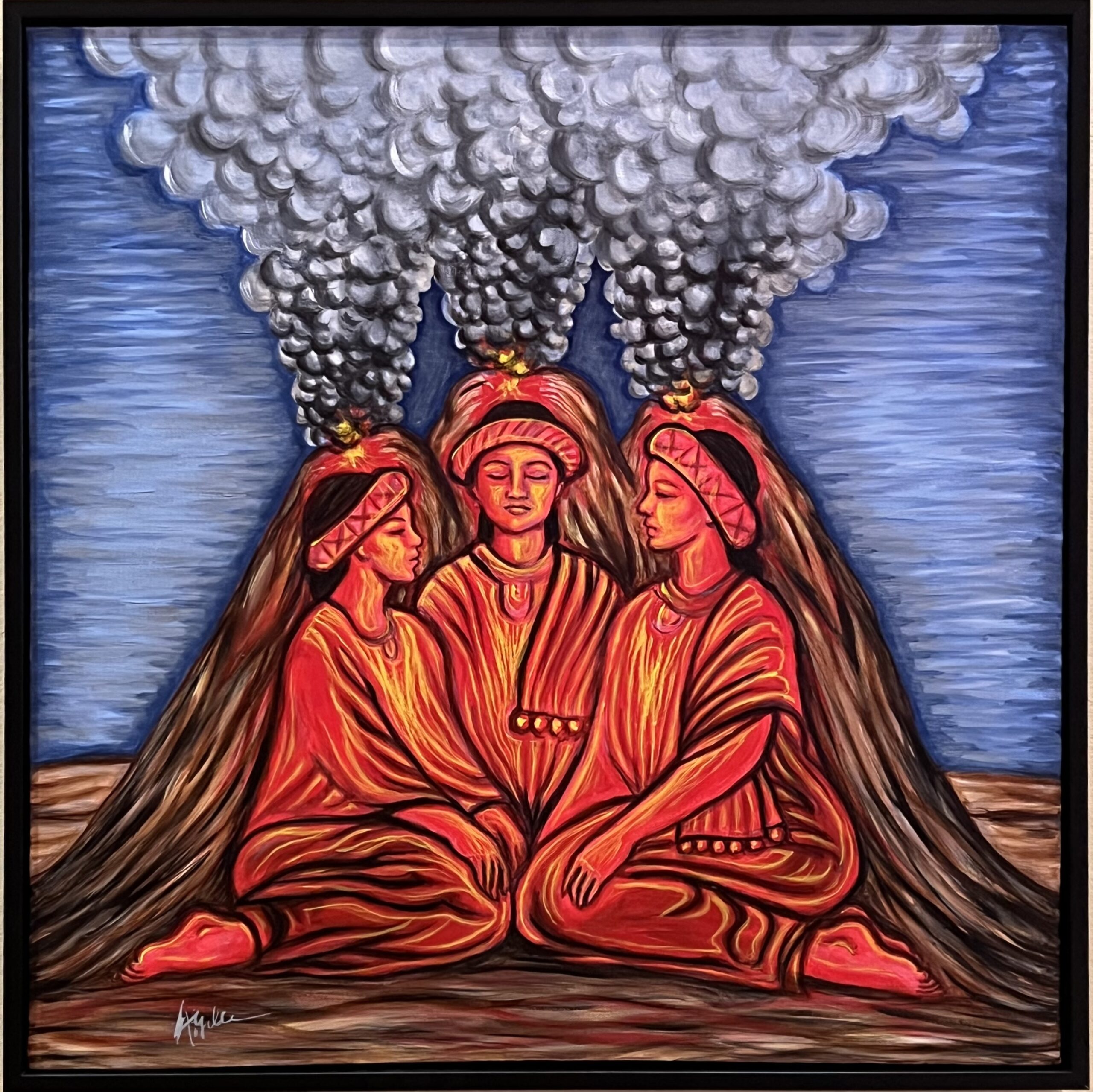
ALM: I am always inspired by great women in history and those who surround me in my everyday life. I find that I am always looking for ways to portray women in the most positive and heroic way possible.
LVR: Love. To love others and to help others see their value. We are all part of one body.
I have one painting called “Seeds of Love” and it was inspired by the three women’s environmental activism, and it is about how we are planting the seeds of love not only in our own children but in our children’s children and our friend’s children and our neighbors and in our community. These seeds of love will grow for generations and we just need to plant them.
Who or what have been influences in your art?
BR: I got to travel to Morocco in June of 2023, and we came together for the Safi International Arts and Music Festival. Art transcends all the languages. It didn’t matter what our religion was, it was the most eye-opening trip of my life. It gave me so much hope for all of us. They would say USA, USA, and I said yes it is America, but deep down inside of me I represent Latin America.
ALM: Family, culture, and of course everything about the feminine mind and body are my biggest influences. In my work, I always want to touch on the perspective of being a woman.I think that definitely shows through very strongly in my work.
My mother has always been a great influence too. Her support and encouragement of my career as well as her brave spirit even in the face of adversity will always drive me to pursue my goals. Women just rock!
LVM: My faith, my culture, and my family have influenced my art. I have learned the importance of gathering and sharing stories. I have learned the importance of gratitude and giving back. The idea that we are not well unless we are all well, and the importance of learning history and recognizing the struggles and sacrifices that others have made in the name of freedom and justice, have all played a role in my art. The women who are featured in this show are an inspiration to me and their stories influence my work. To be able to express their passion, their struggles, and their voices is so important. We need to amplify their voices any way we can. My art is my voice and with it I amplify the voices I admire.
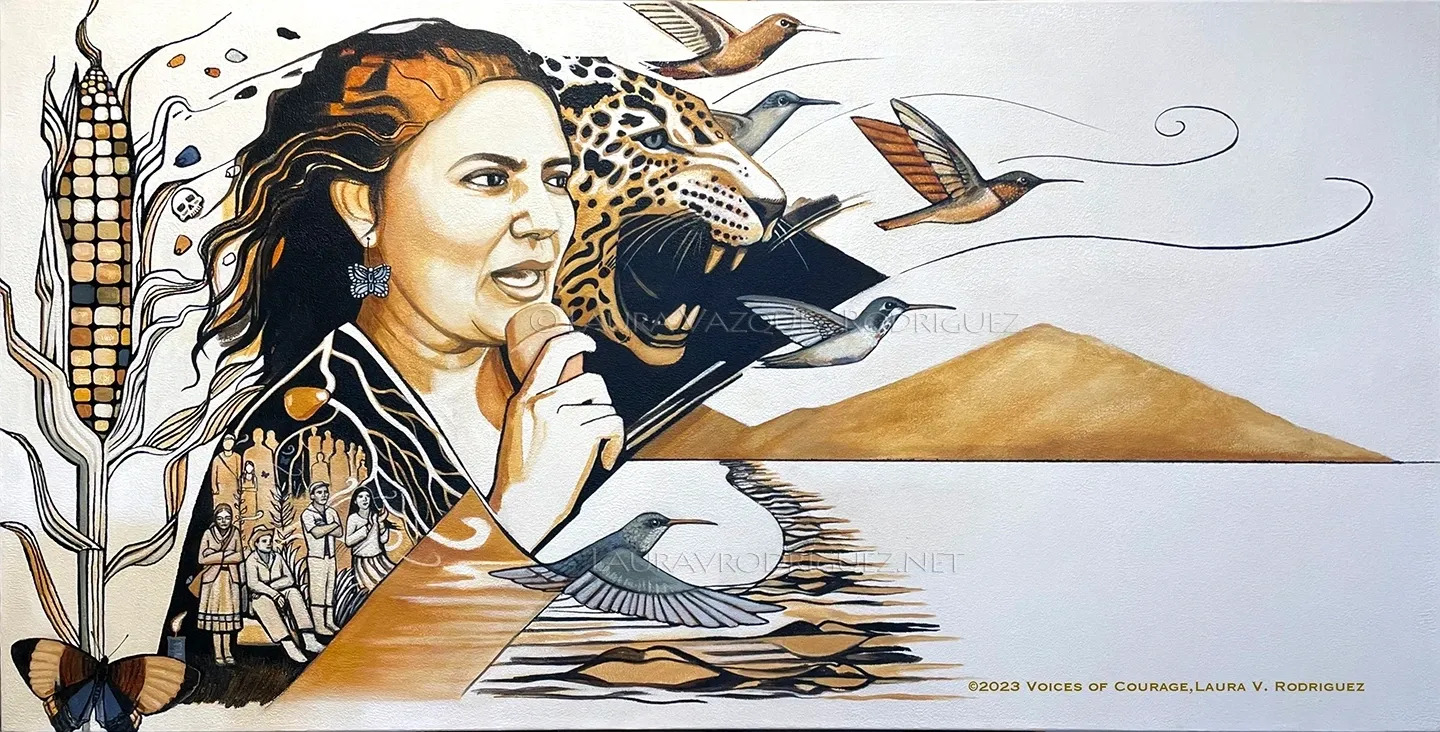
America Invertida is currently at CASA 0101, 2102 E. 1st St., Los Angeles, CA 90033.

